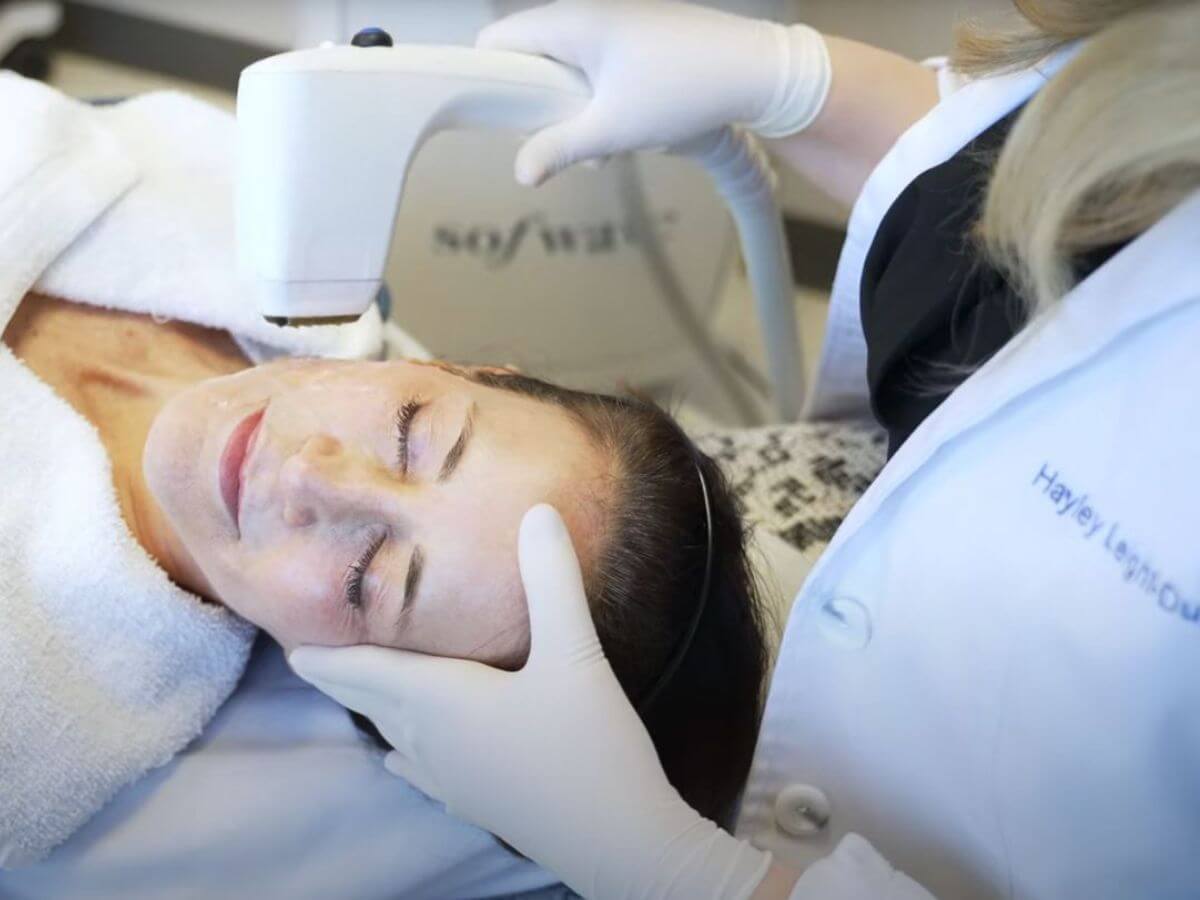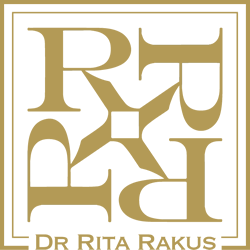WRITTEN BY Daisy Rogozinsky & MEDICALLY REVISED BY Gilly Munavalli, MD
Losing weight is an incredible accomplishment, often resulting in improved health and enhanced well-being. However, alongside this achievement, many individuals encounter the unexpected challenge of extra skin.
Embarking on a weight loss journey can lead to various changes in the body, including changes in skin elasticity due to subsequent weight loss. This common occurrence can affect both physical appearance and emotional well-being related to body image, prompting individuals to seek solutions for managing and addressing loose skin after weight loss.
In this blog, we delve into the factors contributing to loose skin, explore natural and non-surgical interventions for managing it, and discuss surgical options for those seeking more dramatic results. You’ll learn how to navigate the complexities of loose skin after weight loss to feel confident and comfortable in your own skin.Losing weight is an incredible accomplishment, often resulting in improved health and enhanced well-being. However, alongside this achievement, many individuals encounter the unexpected challenge of extra skin.

Understanding Loose Skin
Losing weight is a significant achievement, but it does have its downsides. One of these is looser skin. Several factors contribute to the development of loose skin after weight loss:
1. Age
Age is a crucial factor in determining how the skin responds to weight loss. As we age, our older skin naturally loses elasticity due to a decrease in existing collagen and elastin production. Collagen and elastin are proteins that give the skin its firmness and ability to stretch and bounce back. With age, the skin becomes less able to regain its shape, making it more prone to sagging after weight loss as the elastic fibers weaken.
2. Amount and Rate of Weight Lost
The amount of weight lost and the speed at which it is lost can also impact the skin’s elasticity. During weight fluctuations, the skin stretches and contracts to accommodate changes in body size. Rapid weight loss, especially through crash diets or extreme calorie restriction, can lead to excess loose skin because the skin doesn’t have enough time to adapt to the changes in body size. This phenomenon is particularly common among individuals who undergo bariatric surgery or other forms of weight loss surgery. Similarly, extreme weight loss over a short period can stretch the skin beyond its capacity to recoil.
3. Weight Yo-Yoing
During periods of excess weight gain, the skin expands to accommodate the increased body size, and if this cycle of weight gain and loss is repeated frequently, it can contribute to the development of loose skin.
4. Genetics
Genetic factors play a significant role in how the skin responds to weight loss. Some individuals may be genetically predisposed to have more resilient skin that retains its elasticity even after substantial weight loss. Conversely, others may be more prone to loose skin due to genetic factors that affect collagen production and skin structure.
5. Collagen and Elastin Levels
Collagen and elastin are essential proteins that maintain the skin’s structure and elasticity. The production of these proteins naturally declines with age, leading to a loss of skin firmness and elasticity. Factors such as sun exposure, smoking, and poor nutrition can further accelerate collagen loss and elastin fibers breakdown, exacerbating the problem of loose skin after weight loss.
Managing Loose Skin Naturally
Losing weight naturally and effectively can help minimize the occurrence of loose skin. Several strategies can be implemented to manage loose skin through natural means:
- Hydration and Nutrition: Stay hydrated and eat a balanced diet rich in vitamins, minerals, and antioxidants to support healthy skin. Drinking enough water keeps the skin hydrated, while foods like fruits, vegetables, lean proteins, and healthy fats promote skin regeneration and collagen production.
- Strength Training and Resistance Exercises: Incorporate physical activity focused on resistance training exercises like weightlifting and resistance band workouts into your routine to build muscle mass. Stronger muscles provide support to the skin and can improve its appearance by filling out loose areas and preventing weight gain.
- Gradual Weight Loss Approach: Aim for a sustainable approach with moderate weight loss of about 1-2 pounds per week. This gradual weight loss helps minimize the risk of developing loose skin or excess skin folds. Maintaining a relatively stable weight can help minimize the risk of developing loose skin, as it allows the skin to adapt gradually to changes in body composition.
- Topical Creams and Lotions: Use topical firming creams and lotions with collagen-boosting ingredients like retinol, hyaluronic acid, and vitamin C. Apply these products regularly to areas prone to loose skin to support skin elasticity and create the appearance of tighter, younger skin. While they may not produce dramatic results alone, they can complement other natural strategies for managing loose skin in a few ways.
Non-Surgical Interventions for Lifting Loose Skin
If the above methods aren’t enough, there are several non-surgical interventions available for lifting loose skin after weight loss.
Radiofrequency Therapy
Radiofrequency (RF) therapy is a non-invasive procedure that uses radiofrequency energy to heat the deeper layers of the skin. This controlled heating stimulates collagen production and lifts loose skin over time. RF therapy is commonly used on areas such as the face, neck, abdomen, and thighs. The procedure typically requires multiple sessions for optimal results.
Microneedling
Microneedling is a minimally invasive procedure that involves creating tiny punctures in the skin with a device containing fine needles. These micro-injuries stimulate the body’s natural healing response, leading to increased collagen production and skin lifting. Microneedling can be used to treat a variety of skin concerns, including fine lines, wrinkles, acne scars, and loose skin. The procedure is safe for all skin types and requires little to no downtime. Patients may notice improvements in skin texture and firmness after a few sessions, with continued enhancement over time. When microneedles are combined with Radiofrequency energy as described above, the term is called Radiofrequency Microneedling. This has an added benefit of being able to penetrate deeper with more targeted effects on wrinkles.
Ultrasound Therapy
Ultrasound therapy utilizes focused ultrasound energy to target the skin’s deeper layers, promoting collagen remodeling and lifting loose skin. The ultrasound energy penetrates the skin without causing damage to the surface, making it a safe and effective treatment option. Ultrasound therapy can be used to address various concerns, including wrinkles, sagging skin, and cellulite. Patients may experience mild discomfort during the procedure, but there is no downtime afterward.

Sofwave™
Sofwave™ is a revolutionary , new generation ultrasound solution for loose skin that utilizes advanced ultrasound technology to target the mid-dermal tissue, rejuvenating collagen fibers and improving skin appearance. Clinically-proven to remodel collagen, Sofwave™ effectively lifts the skin of the neck, chin, and face areas. Most patients experience significant improvement after just one 45-minute treatment, with minimal discomfort and no downtime. Sofwave™ is also FDA-cleared for improving the appearance of cellulite and acne scars as well, offering a versatile solution for lifting loose skin and enhancing overall skin quality.
Laser Treatments
Laser treatment may be recommended for individuals seeking to address loose skin. They involve using laser energy to heat the skin’s deeper layers, stimulating collagen production and improving skin elasticity. Different types of lasers may be used, depending on the specific concerns being addressed and the patient’s skin type. Laser treatments can target specific areas of the body, such as the face, neck, arms, and abdomen, to lift loose skin and improve overall skin tone and texture. While multiple sessions may be needed to achieve optimal results, many patients find laser treatments to have minimal discomfort.
Pure Impact™ Electrical Muscle Stimulation
Pure Impact™ combines Sofwave™ technology with Plyopulse™ electrical muscle stimulation (EMS) to tone and firm muscles in the abdomen, buttocks, and thighs. This innovative approach mimics real whole-body plyometric exercises, simultaneously stimulating multiple muscle groups for effective results. Pure Impact™ offers long-lasting results with no downtime, making it a convenient and effective solution for muscle enhancement. With wireless electrodes and diverse activation techniques, Pure Impact™ provides a comfortable treatment experience without the need for wires, belts, or gels, allowing individuals to have comfortable, wire-free treatment experience and resume their normal activities immediately afterward.

Wrapping Up
From understanding the factors contributing to loose skin to exploring natural, non-surgical, and surgical interventions, individuals dealing with loose skin after weight loss have a variety of options available to them. By staying informed, consulting with qualified professionals, and prioritizing self-care, individuals can navigate the challenges of loose skin with confidence and embrace their transformed selves with pride and resilience.



